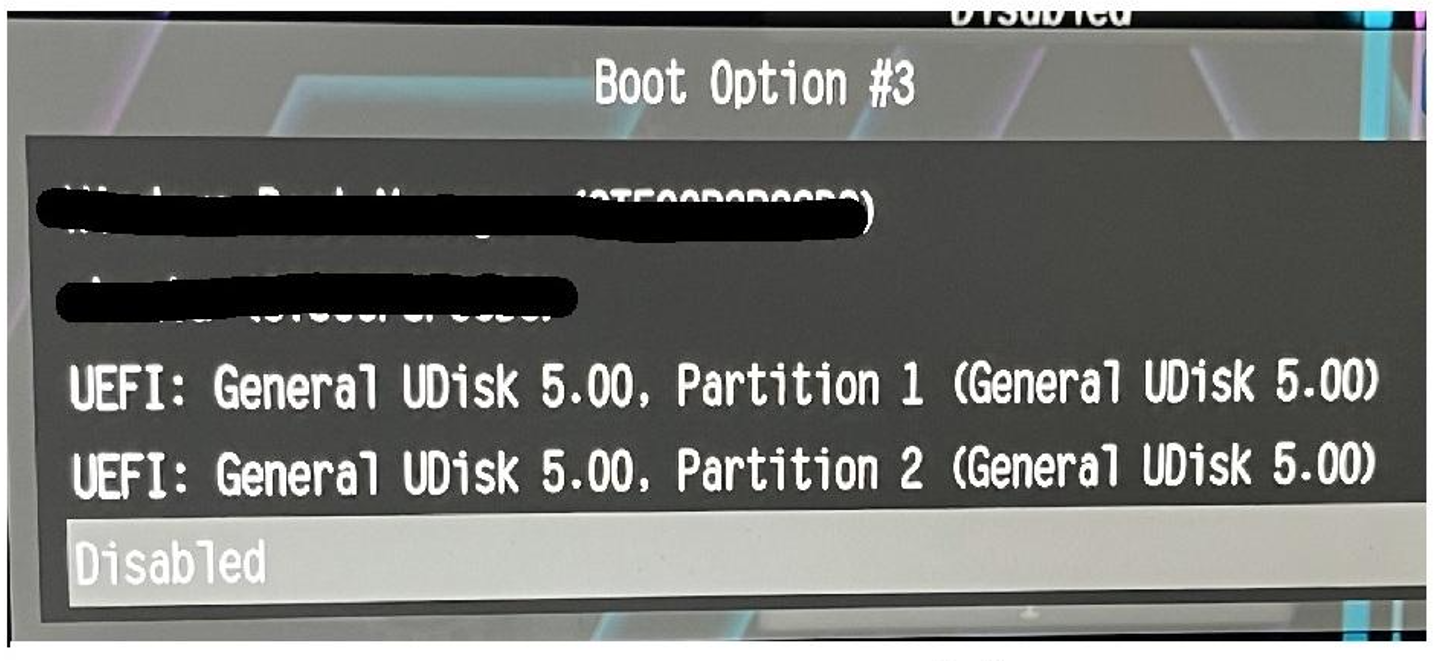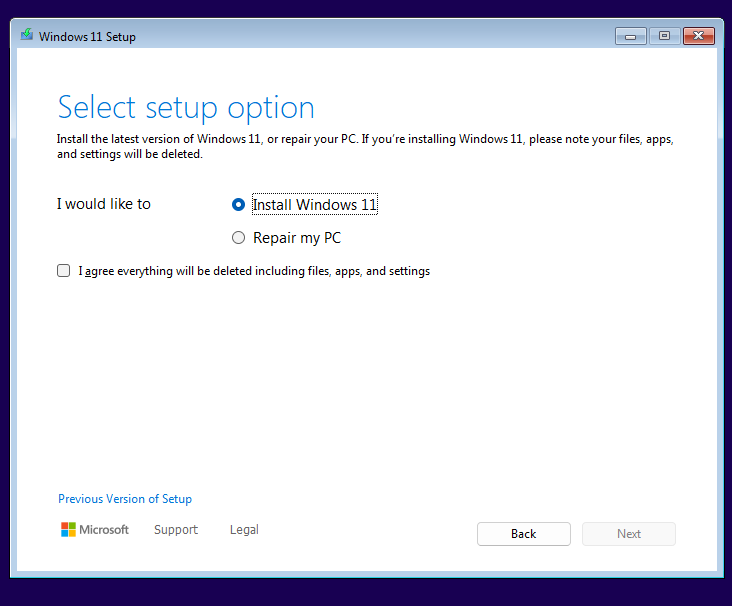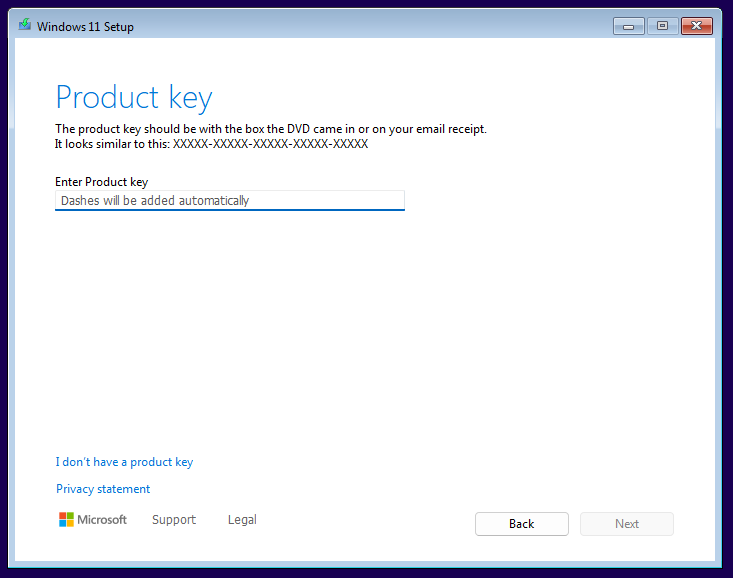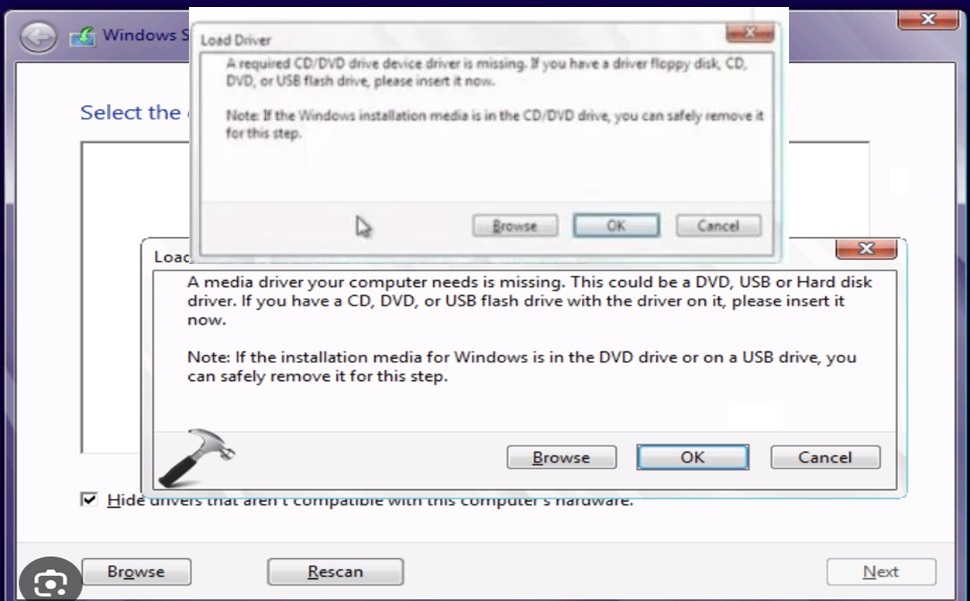
Click Here for Video on How To Install Windows 11 Home/Pro
1. **Backup your data if possible.**
2. Turn on your PC and immediately press the key that opens the boot-device selection menu
3. Select the *UEFI Boot Option* or *BIOS* if UEFI isn’t available.
- If USB isn't detected, disable Secure Boot and CSM in BIOS

4. Wait for the Windows Installer to start up
- This may take several minutes

5. Follow the prompts to install Windows:
- For New Install or to Erase current install, check the box to erase everything and click Next.
- If you currently have Windows 11 installed and want to try and fix it, select Repair My PC and click Next

6. Select I don't have a key. You will enter it after installation

7. Select the version you purchased which should be listed above the activation key on mailed instructions

8. Erase each partition and click Next to begin installation of Windows 11

9. If you encounter an error about missing drivers, click **Browse**
- Expand the USB drive, select the *Missing Drivers Folder*, and click *OK*.
- If the driver isn’t listed, consult the computer or motherboard manufacturer’s instructions for help.

10. The computer will restart a few times. Proceed thru the prompts to setup and then begin using Windows.
Summary Tables of Hotkeys for Boot Menu Access for Different Manufacturers and Devices

